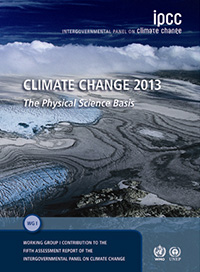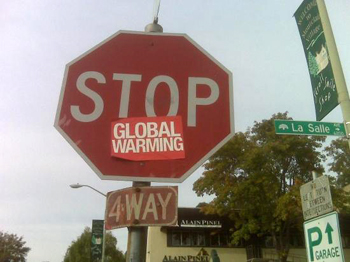Did you complete the Course Orientation?
Before you begin this course, please complete the Course Orientation.
About Lesson 1
Human-caused climate change represents one of the great environmental challenges of our time. To appreciate its societal, environmental, and economic implications, one must appreciate the basic underlying science. This course seeks to first lay down the fundamental scientific principles behind climate change and global warming. These principles involve aspects of atmospheric science and meteorology, as well as aspects of other areas of the physical and biological sciences. With a firm grounding in the basic science, we go on to explore other issues involving climate change impacts and the issue of mitigation — that is, solutions to dealing with the challenges presented by climate change.
In the process, we will learn how to do basic computations and to use theoretical models of the climate system of varying complexity to address questions regarding future climate change. Students will explore the impacts of various alternative greenhouse gas emissions scenarios and investigate policies that would allow for appropriate stabilization of future greenhouse gas concentrations. The structure of the course roughly parallels the treatment of the subject matter by the reports of the Intergovernmental Panel on Climate Change (IPCC), focusing first on the basic science, then the future projections and their potential impacts, and finally issues involving adaptation, vulnerability, and mitigation. We will use a variety of tools to inform our understanding of these topics, including digital video, audio, simulation models, and virtual field trips to online data resources.
In this first lesson, we are going to define climate and climate change, as well as the closely related matter of global warming. We will introduce the components of the climate system (the atmosphere, ocean, cryosphere, and biosphere). We will also briefly introduce some of the other key scientific concepts: atmospheric structure and composition, energy balance, atmospheric and oceanic circulation. We will draw a distinction between natural and human impacts on climate, and we will review the science behind greenhouse gases and the greenhouse effect. We will explore the crucial topic of feedback mechanisms, including important emerging knowledge regarding carbon cycle feedbacks. Finally, we will begin to explore a number of important overriding themes, such as the role of scientific uncertainty in decision making.
What will we learn in Lesson 1?
By the end of Lesson 1, you should be able to:
- Define the Earth's climate system and its components;
- Distinguish the factors governing natural climate variability from human-caused climate change;
- Explain the greenhouse effect;
- Describe the role of feedback mechanisms; and
- Discuss the role of uncertainty in decision-making.
What will be due for Lesson 1?

Please refer to the Syllabus for the specific time frames and due dates.
The following is an overview of the required activities for Lesson 1. Detailed directions and submission instructions are located within this lesson.
- Read:
- IPCC Sixth Assessment Report, Working Group 1
- Summary for Policy Makers
- Introduction: p. 4
- The Current State of the Climate: p. 4-11
- Summary for Policy Makers
- Dire Predictions, v.2: p. 8, 12-13, 22-25
- IPCC Sixth Assessment Report, Working Group 1
- Participate in the LESSON 1: GENERAL DISCUSSION OF METEO 469 discussion forum.

